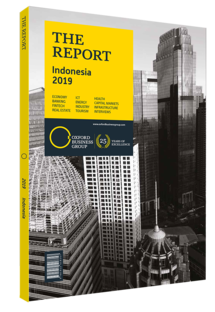Policies to address Indonesian housing shortage boost real estate sector
Indonesia has a significant and growing shortfall of housing. Existing supply is in poor condition and demand is rising for new units. This is especially true for affordable housing in urban areas, where more than one-fifth of the population live in slums. Recognising the issue, the government unveiled a series of policies aimed at significantly augmenting housing supply.
Boosting Supply
Outlined in Joko Widodo’s 2014 presidential manifesto, the “One Million Houses” (OMH) programme intends to reduce the 7.6m shortfall in housing to 5.4m by the end of 2019. In 2015, 699,770 homes were built, followed by 805,169 in 2016, and 904,758 in 2017. The following year saw 1.13m built, of which 70% were aimed at low-income households.
In early 2019 the Ministry of Public Works and Housing (MPWH) revealed that it is targeting the construction of 635,361 units, with state funding of Rp17.6trn ($1.26bn). Of the total, 215,503 properties will be built through physical development assistance, whereby the state directly funds construction, at a cost of Rp7.6trn ($538.9m), while 419,858 will be achieved via financing assistance of just over Rp10trn ($709.1m), including subsidised loan programmes. The MPWH hopes that alongside private development, the overall number of units constructed will total 1.25m in 2019. According to Khalawi Abdul Hamid, director-general of housing provision at the MPWH, 50% of the homes were constructed using funds from the state’s housing budget.
Private Support
While the OMH prioritises low-income housing, some industry leaders feel that such development needs to be increased further. “The backlog is now estimated to be increasing by 1m units annually,” William Liusudarso, president director at local property development company Easton Urban Kapital, told OBG. “This could be solved by the private sector being more engaged in the funding of social housing.”
One move undertaken in this regard was the signing in January 2019 of an operational cooperation agreement between financial services provider Sarana Multigriya Finansial (SMF) and the MPWH to reduce the financial burden of subsidised loan programmes on the state by 25%. The agreement will see SMF provide financing via 14 mortgage lending banks, with the deal to be renewed on an annual basis.
High-end
For residential sales in the mid to upper segments, the removal of the minimum loan-to-value requirement for mortgage lenders in August 2018 is expected to boost sales by 10% in the following year. The move means that first-time buyers no longer need to make a down payment of at least 15% before being granted a mortgage. While this could be a boon to first-time buyers, the market for condominiums and high-rise developments is dominated by investors rather than end users, meaning that it faces a slightly different set of challenges. “While the landed housing market is comprised of 75-80% end user buyers, the condominium market still has investors serving as the main purchasers,” David Cheadle, managing director of commercial real estate services company Cushman & Wakefield Indonesia, told OBG. “Although presales have declined from 68% in the second quarter of 2017 to 56% in the fourth quarter of 2018, the current level of pre-sales remains healthy in regional terms. Condominium sales rates are inversely correlated with bank deposit interest rates, and since Bank Indonesia is looking to hold recent interest rate increases to their current levels, together with improving market sentiment, there is an expectation of demand into the second half of 2019,” Cheadle added.
Data compiled by real estate investment management firm JLL in its “Jakarta Property Market Review Q3 2018” report suggests that the condominium market remained challenging, achieving sales of around 1000 units in the third quarter, down 200% year-on-year. JLL stated that smaller units were selling better, and outlined three factors slowing down the condo market: the presidential election in April 2019, competition with the secondary market and currency depreciation.
You have reached the limit of premium articles you can view for free.
Choose from the options below to purchase print or digital editions of our Reports. You can also purchase a website subscription giving you unlimited access to all of our Reports online for 12 months.
If you have already purchased this Report or have a website subscription, please login to continue.

